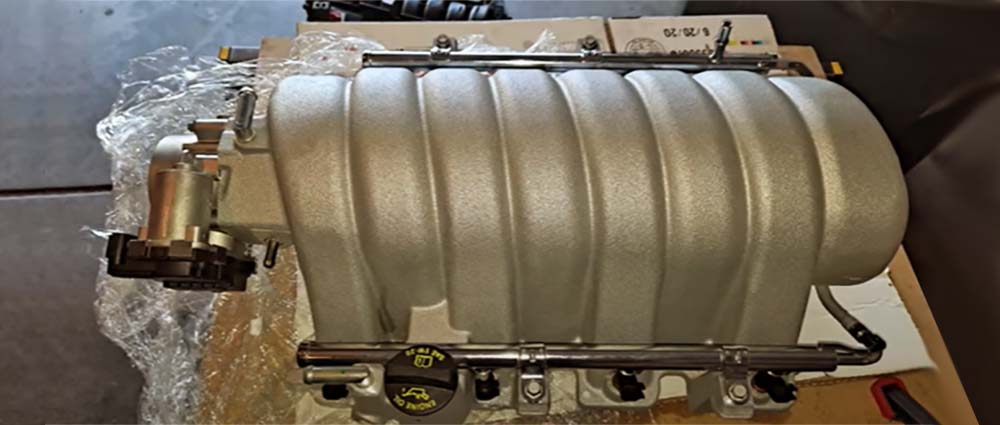The query of whether a 6.1 Hemi intake manifold will seamlessly integrate with a 5.7 Hemi engine piques the interest of numerous automotive enthusiasts and professionals alike. This discussion extends beyond mere compatibility, touching upon the nuanced realm of performance enhancements, the necessity for additional modifications, and the ultimate impact on the vehicle’s operation. Through a meticulous exploration of this subject, we aim to provide a comprehensive understanding that assists enthusiasts in making informed decisions regarding their engine upgrades.
The Hemi Legacy: A Closer Look at the 5.7 and 6.1 Engines
Diving into the lineage of the 5.7 Hemi and 6.1 Hemi engines reveals a fascinating journey of innovation and performance. These engines, celebrated for their robust power and efficiency, serve as the cornerstone for many high-performance vehicles. The 5.7 Hemi, known for its reliability and versatility, offers a solid foundation for modifications. With its cast-iron block, aluminum heads, and advanced cylinder head design, the 5.7 Hemi has proven itself as a dependable and adaptable platform for enthusiasts seeking to unlock its full potential.
In contrast, the 6.1 Hemi, with its higher output and performance-oriented design, provides an enticing upgrade path for those seeking to elevate their vehicle’s capabilities. Boasting a larger displacement, increased compression ratio, and refined intake and exhaust systems, the 6.1 Hemi represents a more potent iteration of the Hemi lineage. Understanding the architectural nuances and performance profiles of these engines is crucial in assessing the feasibility and potential benefits of integrating components from one into the other.
Compatibility Assessment: Fitting a 6.1 Hemi Intake Manifold on a 5.7 Hemi
The central question, “will a 6.1 Hemi intake manifold fit a 5.7 Hemi,” encompasses both mechanical fitment and the broader implications for engine performance. Initial findings suggest that, from a structural standpoint, the 6.1 intake manifold can indeed be mounted onto a 5.7 Hemi engine. This compatibility stems from their shared design principles and the manifold’s accommodation for square port heads, characteristic of the 5.7, 6.1, and 6.4 Hemi engines.
However, the transition is not without its hurdles. For optimal integration, modifications such as spacer plates might be necessary, especially for earlier versions of the 5.7 heads. This adjustment ensures a snug fit and aligns the manifold for effective performance. Moreover, considerations regarding gaskets, fuel rails, and the potential need for custom fittings underscore the complexity of this modification.

Performance Gains vs. Required Modifications
The allure of fitting a 6.1 intake manifold onto a 5.7 Hemi largely revolves around the pursuit of enhanced performance. The 6.1 manifold’s aluminum construction and optimized airflow design are indeed favorable for high-speed operation, promising improved airflow and increased horsepower and torque. However, this enhancement is not guaranteed merely by swapping the manifolds. The 6.1 manifold’s potential benefits may not be fully realized without complementary modifications such as camshaft upgrades and exhaust system adjustments.
Experts often suggest evaluating alternatives like the 6.4 intake manifold, which might offer better performance efficiency due to its dual-runner design and less susceptibility to heat soak—a common issue with the aluminum 6.1 manifold. The 6.4 manifold’s integrated runner control and larger plenum volume can contribute to a broader powerband and improved low-end torque.
Essential Modifications and Considerations
Embarking on this modification journey necessitates a comprehensive approach, encompassing various supplementary changes to fully leverage the potential of the 6.1 intake manifold on a 5.7 Hemi:
- Use of high-quality gaskets to ensure airtight sealing between the manifold and engine surfaces, preventing any air leaks that could compromise performance.
- Evaluation of fuel rail compatibility, potentially requiring the adaptation or replacement of the 5.7 Hemi’s fuel rails to accommodate the different injection system and fuel demands of the 6.1 manifold.
- Assessment of the exhaust system, considering the need for adjustments to accommodate the new airflow characteristics and prevent any potential bottlenecks that could limit performance gains.
- Tuning and calibration of the engine management system to optimize the fuel and spark delivery for the modified setup, ensuring efficient combustion and maximizing the benefits of the new manifold.
These considerations highlight the complexity and need for meticulous planning when attempting to enhance a vehicle’s performance through such modifications. Neglecting any of these aspects could potentially negate the intended performance gains or even lead to detrimental effects on the engine’s operation.
Conclusion
In sum, while the task of fitting a 6.1 Hemi intake manifold onto a 5.7 Hemi engine presents a blend of opportunity and challenge, its success lies in the meticulous execution of the modification process. This endeavor underscores the balance between mechanical compatibility and the nuanced requirements of engine tuning and performance optimization. For the enthusiast willing to navigate these complexities, the modification can unlock a new level of performance, making the effort a worthy pursuit for those dedicated to maximizing their vehicle’s potential.
However, it is crucial to approach this modification with a comprehensive understanding of the implications and requirements involved. Seeking guidance from experienced professionals, investing in high-quality components, and meticulously addressing every aspect of the integration process are essential steps toward achieving the desired results. Only through a thorough and methodical approach can enthusiasts fully harness the potential of this modification and ensure the longevity and reliability of their prized engines.

